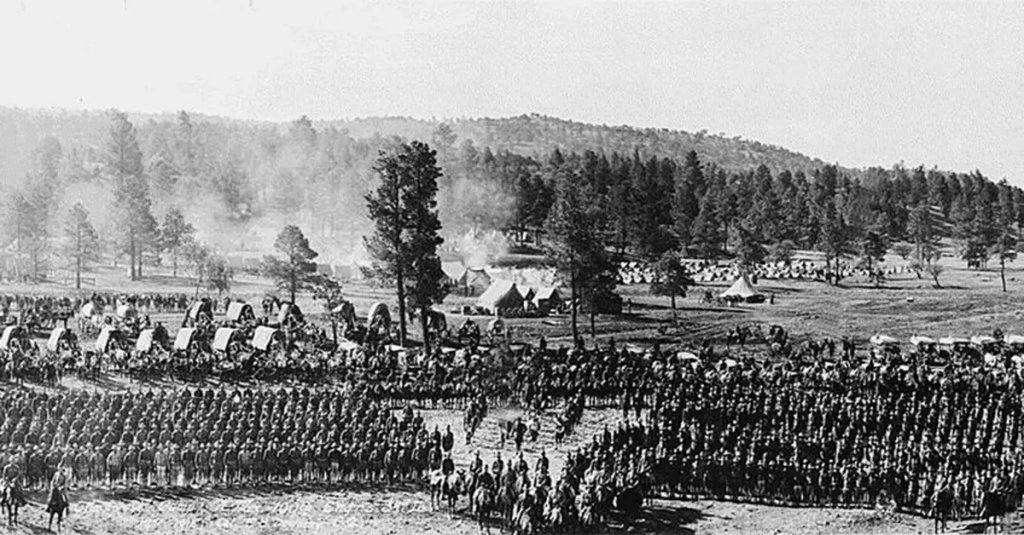In a section of the National Archives dedicated to historic panoramic photos, there’s an odd selection of wide images that show the troops and trainees who would soon deploy to France as America joined World War I. (Panoramics are obviously wide photos, so you may need to turn your device sideways and/or zoom in to see all the detail in the photos.)

Our first entry shows soldiers of the 331st Machine Gun Battalion performing exercises at Camp Grant in Rockford, Illinois. Army physical training was overhauled with the publication of the new U.S. Army Manual of Physical Training in 1914 which emphasized four pillars: general health and bodily vigor; muscular strength and endurance; self-reliance; and smartness, activity, and precision.

This photo shows engineers of the 109th Engineers in June 1918 as they trained at Gila Forest Camp, New Mexico. It’s unlikely the men made it to France in time for the fighting, but training like this allowed U.S. forces to overcome the trench works and other defenses of Germany as they pushed east and liberated France.

Company H of the 347th Infantry pose in Camp Dix, New Jersey, in January 1919. During the war, men like this rotated into position on the lines or, during major offensives, were sent against German defenders en masse, hitting machine-gun nests with grenades and bodies to ensure victory. After the war, they were sent into Germany as an army of occupation to ensure the terms of the armistice and the peace treaty were followed.

“White trucks” at Fort Riley. The trucks in the photo were made by the White Sewing Machine Company, later renamed the White Motor Corps. The Army had asked the manufacturer to design a motorized ambulance in 1902, just two years after the company had produced its first car. By World War I, their trucks were well-respected, and they did so well in the war that France awarded the trucks the Croix de Guerre.

Sailors go through boat exercise at the Naval Training Station, Hampton Roads, Virginia, in September 1918. The naval war was largely over by the time America joined the fray, but sailors still fought against German U-boats and protected the convoys that kept troops ashore supplied and fed.

At Camp Meigs, Washington D.C., quartermasters trained on how to keep the men full of food and weighed down with valuable ammunition. This was more challenging than it might sound. Allied advances in the closing months of the war were frequently slowed down by artillery and logistic support getting choked up for hours on the heavily damaged roads behind the infantry, forcing the infantry to slow or stop until support could reach them.
Quartermasters and other troops who could get the trucks through could save lives.


